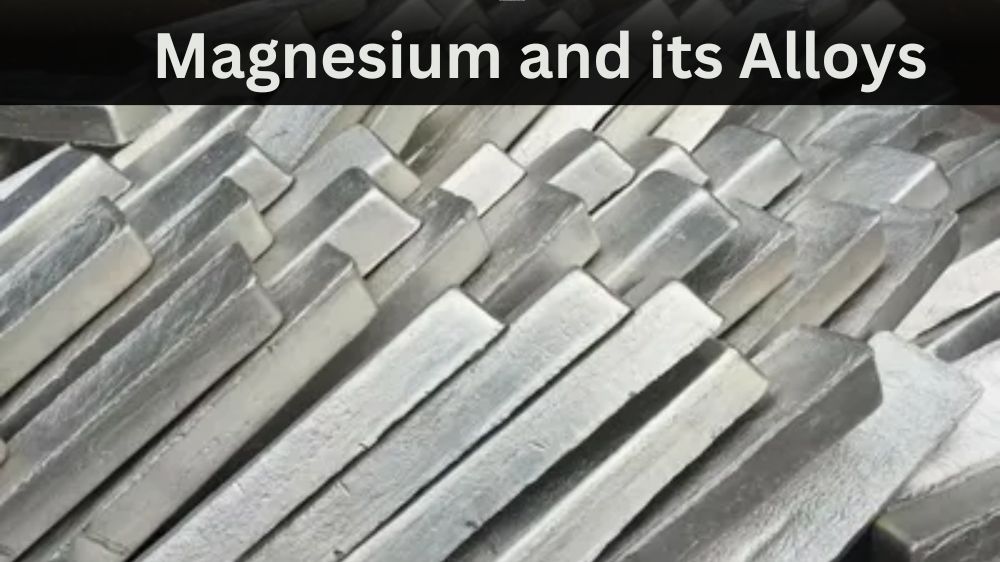
What is Magnesium and its Alloys
Magnesium is a silvery-white, naturally occurring metal that has been around for centuries. This versatile element is the lightest structural metal and has various applications in various industries. However, pure magnesium is too brittle and soft for practical use, so it is mostly used in alloys. Today, we will explore the world of magnesium and its alloys and discuss their characteristics, applications, benefits, and potential drawbacks.
Characteristics of Magnesium and its Alloys
Magnesium is the ninth most abundant element in the universe and the eighth most abundant on Earth’s surface. It has a low density of 1.74 g/cm3, about 30% lower than aluminium and 75% lower than steel. Magnesium is highly conductive to electricity and heat and highly reactive with oxygen and water. As an alloying element, magnesium can be combined with different metals to enhance their mechanical properties or form intermetallic compounds. Some of the most common alloying agents include aluminium, zinc, manganese, and rare earth elements.
Applications of Magnesium and its Alloys
Magnesium and its alloys are widely used in various industries, including aerospace, automotive, electronics, healthcare, and sports equipment. Due to their high strength-to-weight ratio, magnesium alloys are ideal for structural components, such as aircraft fuselages, engine blocks, wheels, and frames. Magnesium alloys, such as screws, plates, and cages, are also used in medical implants because they have excellent biocompatibility and corrosion resistance. Due to their lightweight and high thermal conductivity, magnesium alloys can also be found in consumer electronics, such as laptops, cameras, and smartphones.
Advantages of Magnesium and its Alloys
Magnesium and its alloys offer several benefits over other metals and materials. Magnesium is a sustainable and eco-friendly material because it is abundant, recyclable, and lightweight. Secondly, magnesium alloys have excellent mechanical properties, such as high strength, toughness, and ductility. Magnesium also has good castability and corrosion resistance, which makes it ideal for complex shapes and harsh environments. Magnesium alloys can be tailored to specific applications by adjusting the alloying elements and processing techniques.
Disadvantages of Magnesium and its Alloys
Despite their benefits, magnesium and its alloys also have some potential drawbacks to consider. Firstly, magnesium is highly flammable in its pure form, posing a fire hazard if not handled correctly. Magnesium alloys can be expensive and difficult to manufacture, especially for high-performance applications. Thirdly, some magnesium alloys can suffer from corrosion and stress corrosion cracking in certain conditions, compromising their integrity over time. Lastly, magnesium alloys can be prone to galvanic corrosion when in contact with other metals, accelerating corrosion rates and reducing lifespan.
Future Prospects of Magnesium and its Alloys
The prospects of magnesium and its alloys look promising as researchers and industry professionals constantly explore new ways to improve their properties and expand their applications. Current research areas include high-strength and high-ductility magnesium alloys, low-cost and scalable production methods, and biodegradable magnesium implants. As the demand for sustainable, lightweight, and high-performance materials grows, magnesium and its alloys are expected to play an important role in the future of engineering and technology.
Conclusion:
In conclusion, magnesium and its alloys have a remarkable range of characteristics, applications, benefits, and potential drawbacks. Magnesium is a lightweight, conductive, and reactive metal that can enhance the properties of other metals through alloying. Magnesium alloys are used in various industries to create structural components, medical implants, and consumer electronics. Magnesium and its alloys offer several benefits, such as sustainability, high strength, and good castability. However, they also have potential drawbacks, such as flammability, cost, and corrosion susceptibility. Magnesium and its alloys have a bright future as researchers and industry professionals strive to improve their properties and applications.